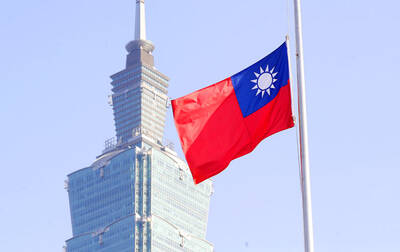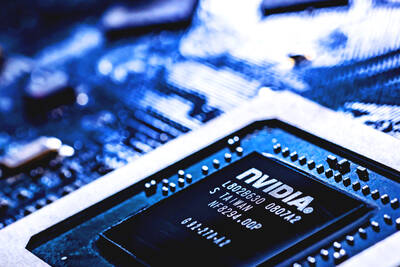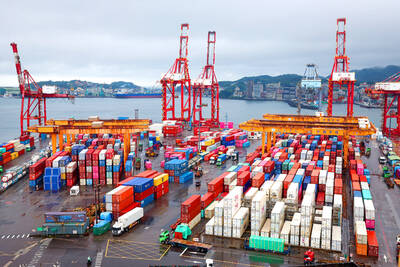Asustek Computer Inc (華碩電腦), which makes the world’s first low-cost netbook computer, said yesterday it aimed to become the world’s No. 4 laptop computer maker this year by expanding shipments by a faster than industry average rate of 36 percent.
It is part of the company’s drive to become No. 3 next year on the back of its Eee PC family.
Asustek said it would ship about 16.52 million notebook computers this year, including netbooks, up 36.6 percent from last year’ s 12.2 million units, with strongest growth coming from Asia and South American markets, chief executive Jerry Shen (沈振來) said.
Overall, notebook shipments are expected to grow 20 percent year-on-year this year, Asustek said.
Asustek, which now ranks No. 5 in the global notebook market, said it would not sacrifice profit margin for market share gain as some rivals have done.
The company aims to keep its operating profit margin between 4 percent and 6 percent, this year, Shen said.
Asustek “will aggressively expand our market share,” Shen said.
Vincent Chen (陳豊丰), a PC analyst with Yuanta Securities (元大證券), said it “would be impressive if Asustek can keep its operating margin at between 4 to 6 percent, as most PC brands are unable to sustain a margin higher than 4 percent.”
Asustek plans to boost its product lineup by launching its first tablet computer in the second half of this year to compete with Apple Inc’s iPAD, Shen said.
The shipment forecast has factored in worsening labor shortage problems, Shen said.
Labor shortages at its own factories and electronic manufacturing unit Pegatron Technology Corp (和碩聯合), as well as at component suppliers, could cause a 10 percent reduction in shipments in the current quarter.
“Labor shortages are a serious problem,” Shen said. “All our production lines are affected. We are trying to solve this problem now.”
Revenues may drop this quarter by between 10 percent and 20 percent, compared to last quarter’s NT$84.75 billion, chief executive David Chang (張偉明) said.
Shipments of notebooks, including netbooks, are expected to decline 10 percent to 20 percent from 4.5 million units shipped in the fourth quarter of last year, Chang said.
“We are cautiously optimistic about the first quarter and second quarter,” Shen said. “There will be more uncertainty in the second quarter.”
Business in Europe would see a tough next quarter, partly because of depreciation of the euro, which could weaken consumer purchasing power, and rising component prices, he said.
Asustek said on Monday that fourth-quarter earnings totaled NT$5.66 billion, reversing losses of NT$2.8 billion in the same period of 2008. That represents a 13 percent decline from NT$6.5 billion in earnings on a quarterly basis.

ELECTRONICS BOOST: A predicted surge in exports would likely be driven by ICT products, exports of which have soared 84.7 percent from a year earlier, DBS said DBS Bank Ltd (星展銀行) yesterday raised its GDP growth forecast for Taiwan this year to 4 percent from 3 percent, citing robust demand for artificial intelligence (AI)-related exports and accelerated shipment activity, which are expected to offset potential headwinds from US tariffs. “Our GDP growth forecast for 2025 is revised up to 4 percent from 3 percent to reflect front-loaded exports and strong AI demand,” Singapore-based DBS senior economist Ma Tieying (馬鐵英) said in an online briefing. Taiwan’s second-quarter performance beat expectations, with GDP growth likely surpassing 5 percent, driven by a 34.1 percent year-on-year increase in exports, Ma said, citing government

UNIFYING OPPOSITION: Numerous companies have registered complaints over the potential levies, bringing together rival automakers in voicing their reservations US President Donald Trump is readying plans for industry-specific tariffs to kick in alongside his country-by-country duties in two weeks, ramping up his push to reshape the US’ standing in the global trading system by penalizing purchases from abroad. Administration officials could release details of Trump’s planned 50 percent duty on copper in the days before they are set to take effect on Friday next week, a person familiar with the matter said. That is the same date Trump’s “reciprocal” levies on products from more than 100 nations are slated to begin. Trump on Tuesday said that he is likely to impose tariffs

HELPING HAND: Approving the sale of H20s could give China the edge it needs to capture market share and become the global standard, a US representative said The US President Donald Trump administration’s decision allowing Nvidia Corp to resume shipments of its H20 artificial intelligence (AI) chips to China risks bolstering Beijing’s military capabilities and expanding its capacity to compete with the US, the head of the US House Select Committee on Strategic Competition Between the United States and the Chinese Communist Party said. “The H20, which is a cost-effective and powerful AI inference chip, far surpasses China’s indigenous capability and would therefore provide a substantial increase to China’s AI development,” committee chairman John Moolenaar, a Michigan Republican, said on Friday in a letter to US Secretary of

‘REMARKABLE SHOWING’: The economy likely grew 5 percent in the first half of the year, although it would likely taper off significantly, TIER economist Gordon Sun said The Taiwan Institute of Economic Research (TIER) yesterday raised Taiwan’s GDP growth forecast for this year to 3.02 percent, citing robust export-driven expansion in the first half that is likely to give way to a notable slowdown later in the year as the front-loading of global shipments fades. The revised projection marks an upward adjustment of 0.11 percentage points from April’s estimate, driven by a surge in exports and corporate inventory buildup ahead of possible US tariff hikes, TIER economist Gordon Sun (孫明德) told a news conference in Taipei. Taiwan’s economy likely grew more than 5 percent in the first six months